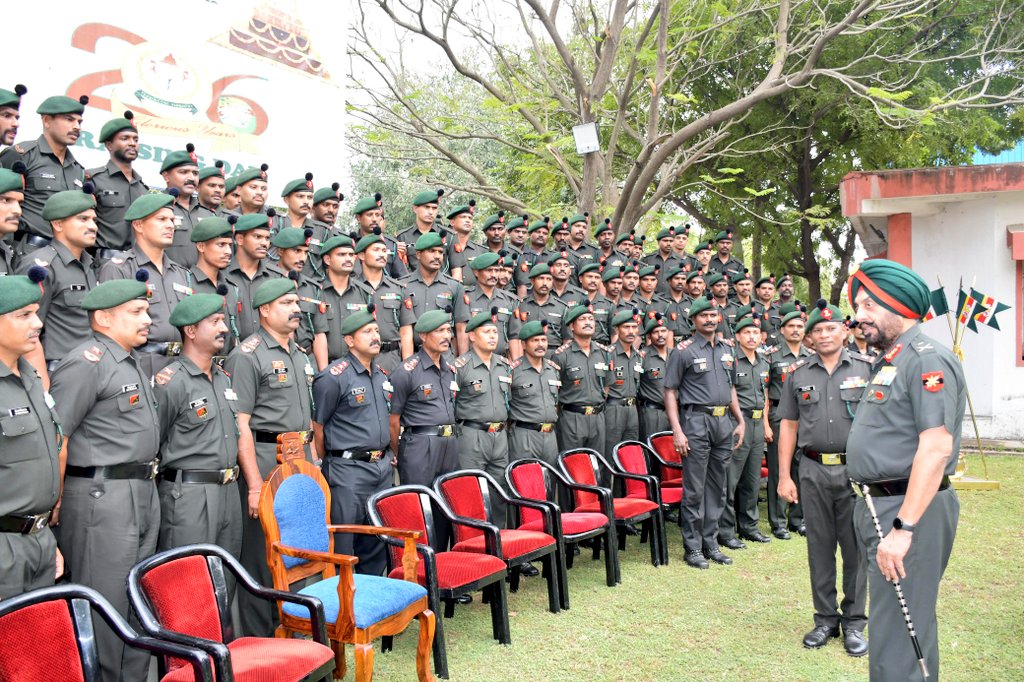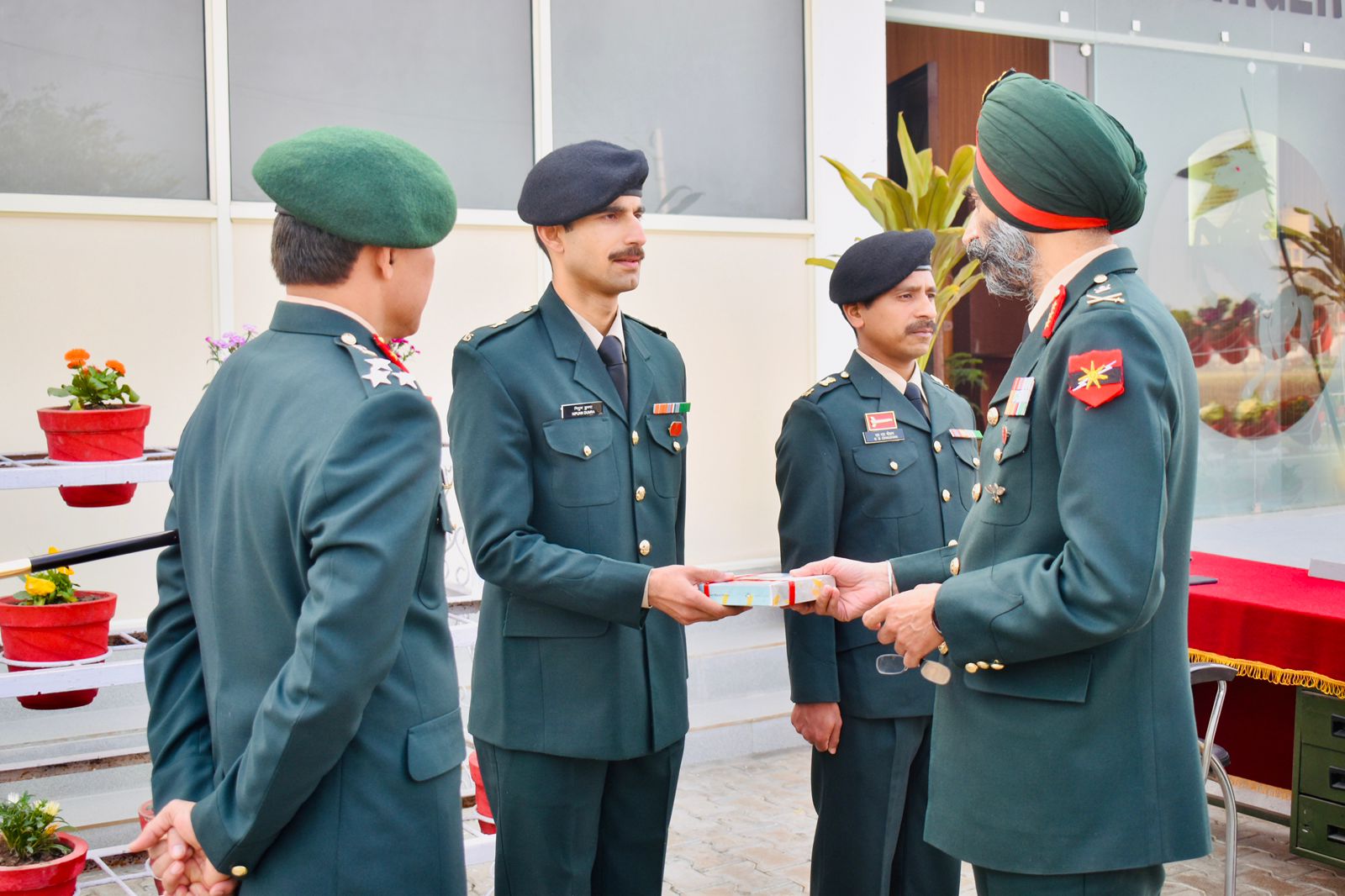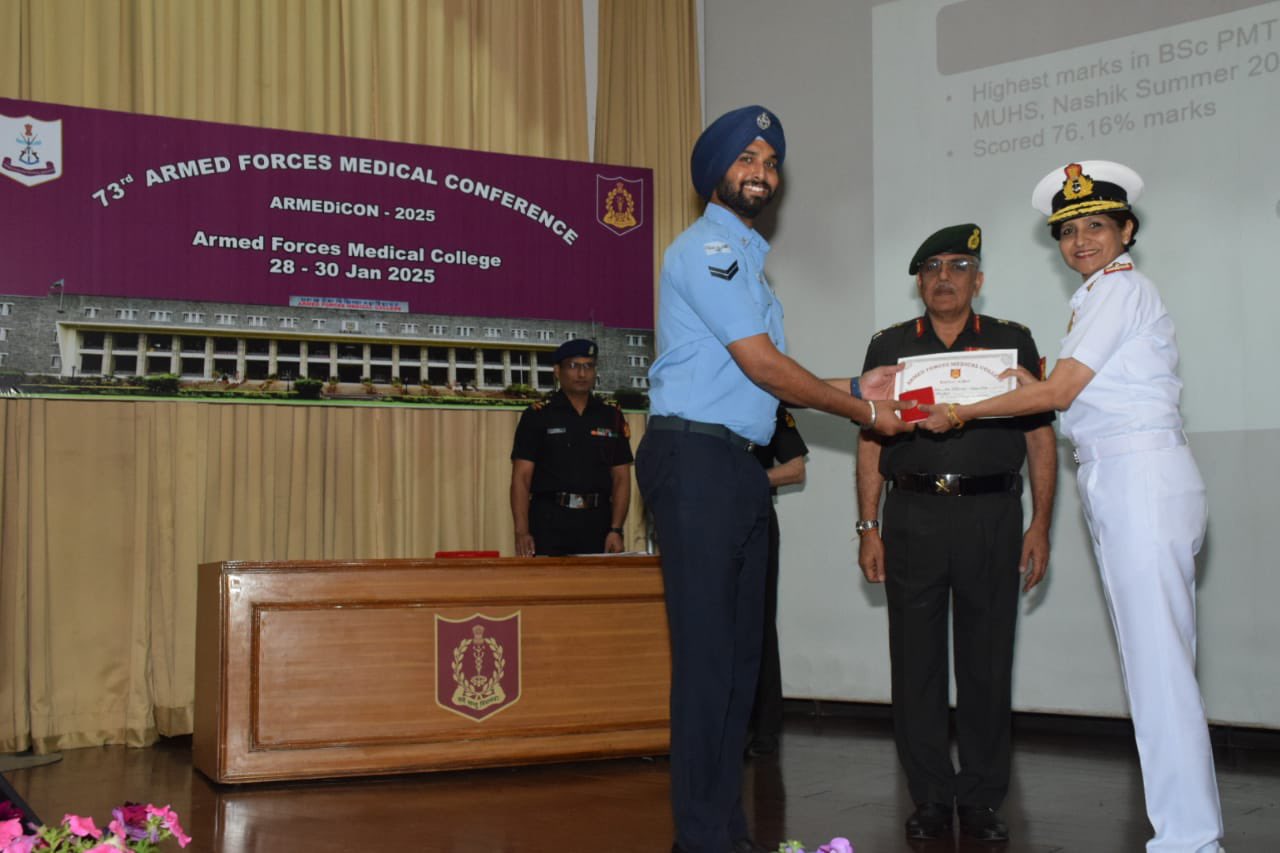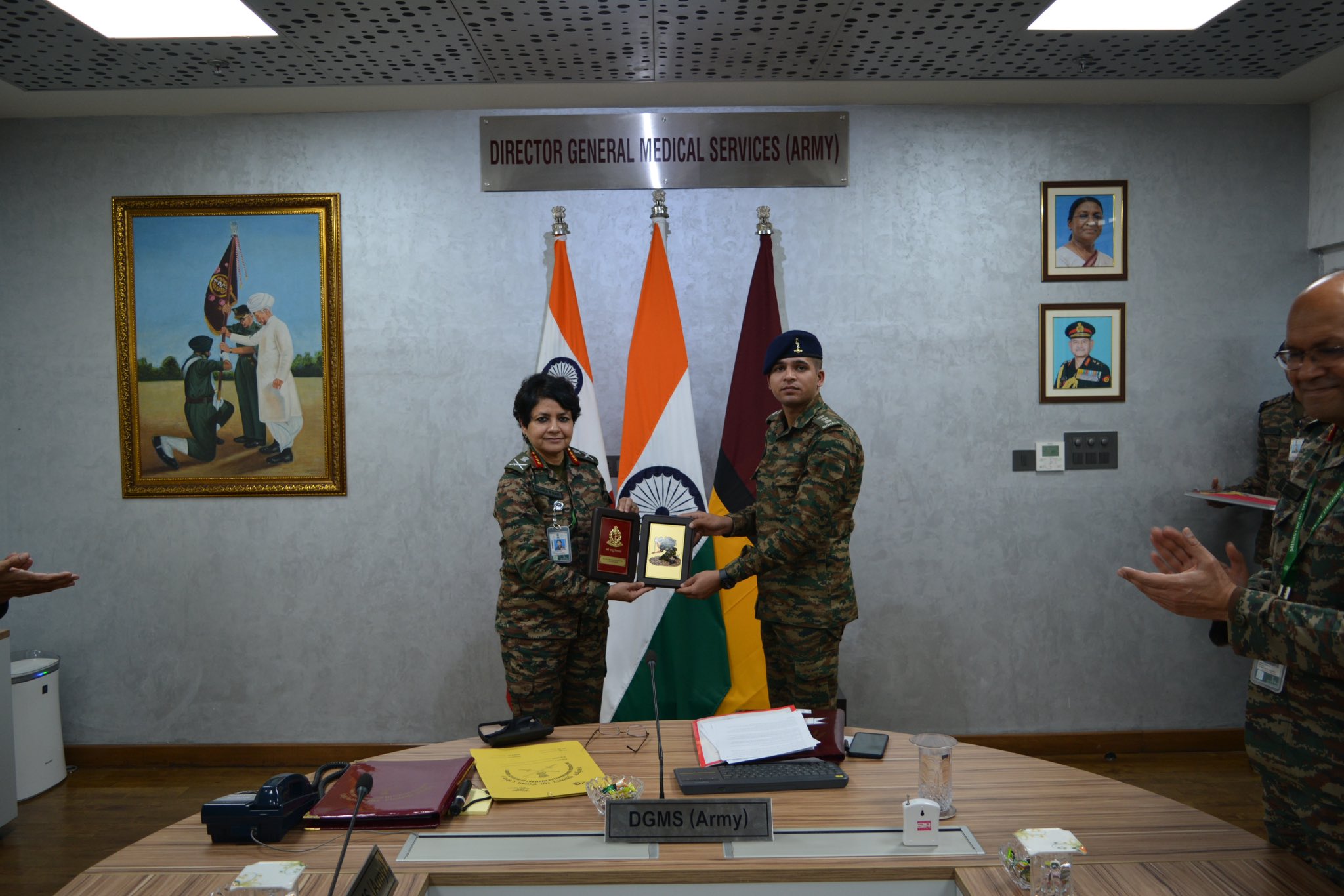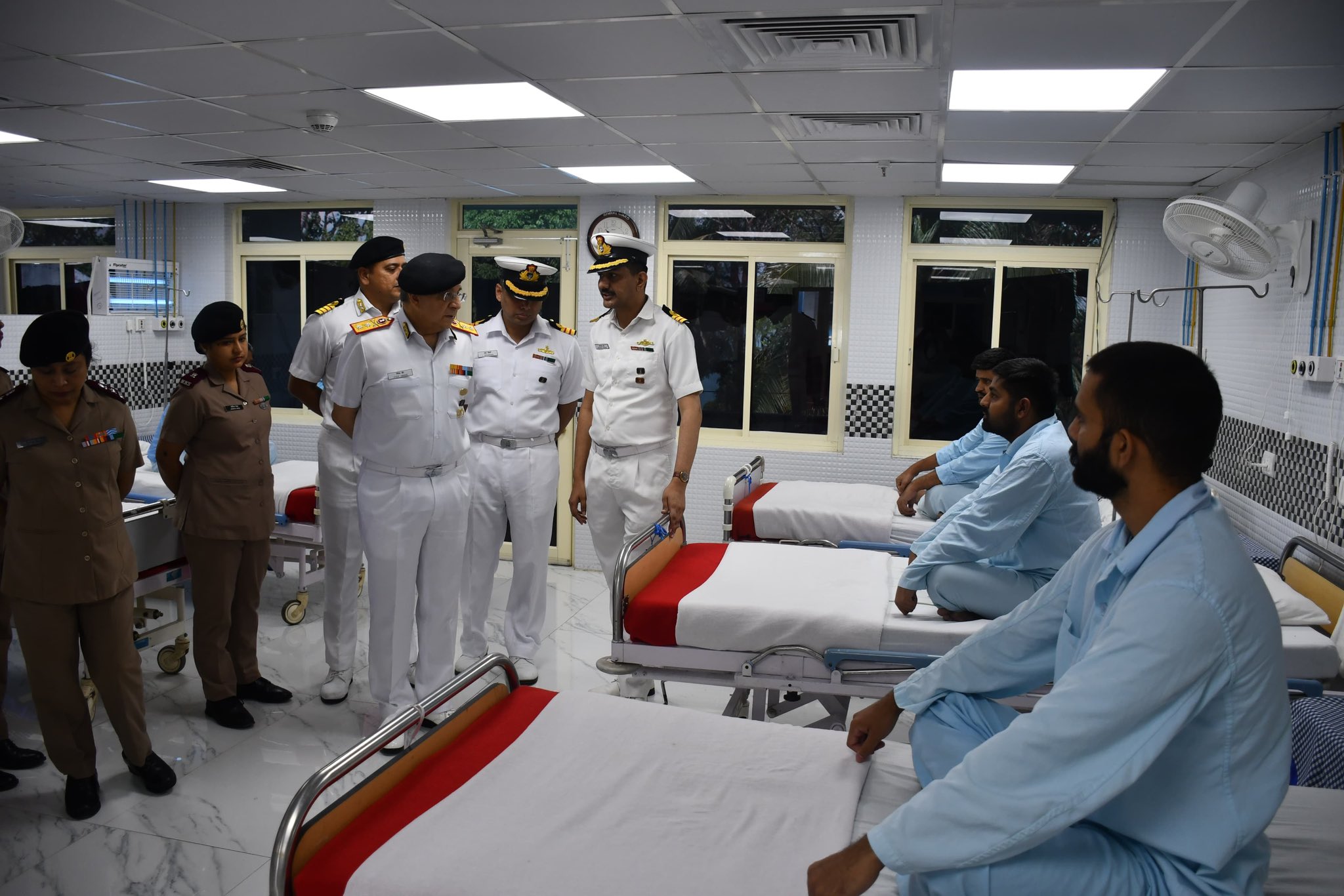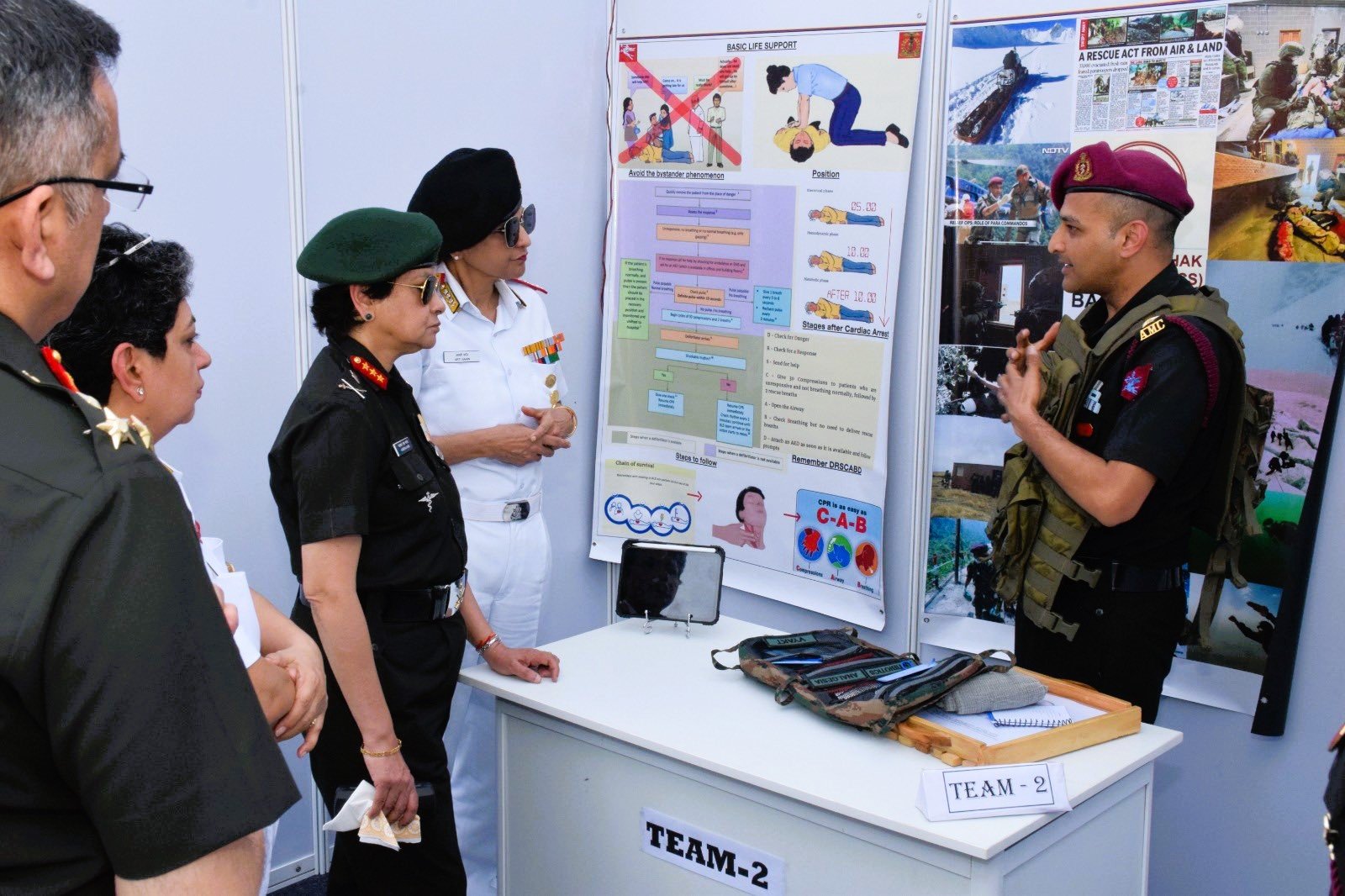Lt Gen Manjinder Singh Visits 16 MADRAS
In a significant event celebrating the rich history and contributions of the Indian Army’s Madras Regiment, Lieutenant General Manjinder Singh,…
Lt Gen Harbinder Singh Vandra Reviews Black Charger Brigade
Lt Gen Harbinder Singh Vandra, Chief of Staff (COS), Sapta Shakti Command, visited the Black Charger Brigade to assess their…
12 Paramedics of AFMS Honored at ARMEDiCON 2025
The Armed Forces Medical College (AFMC) in Pune played host to the prestigious ARMEDiCON 2025, held from January 28 to…
Lt Gen Sadhna S Nair Inaugurates Army Medical Corps Confidential Report Management Suite (AMC CRMS)
In a significant step towards digital transformation and paperless administration, the Army Medical Corps Confidential Report Management Suite (AMC CRMS)…
Surgeon Rear Admiral Vivek Hande, VSM, Visits Andaman and Nicobar Command to Assess Medical Facilities
Surgeon Rear Admiral Vivek Hande, VSM, Senior Consultant (Medicine) at the Office of the Director General Armed Forces Medical Services…
AFMC Pune Hosts First-Ever “Yodha Rakshak Bachav Kit Challenge”
The prestigious ARMEDiCON 2025, held at the Armed Forces Medical College (AFMC), Pune, from January 28 to 30, witnessed a…

